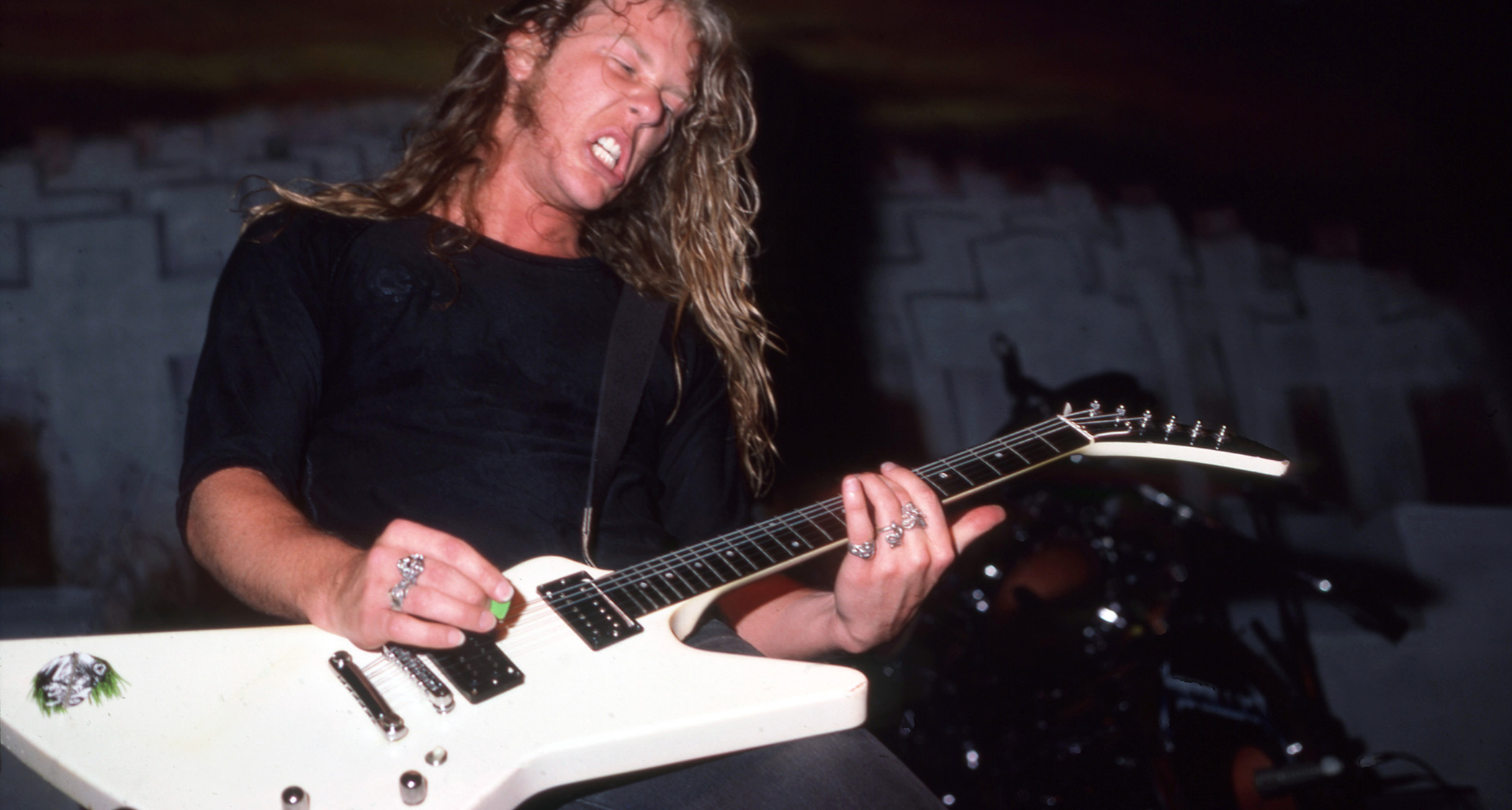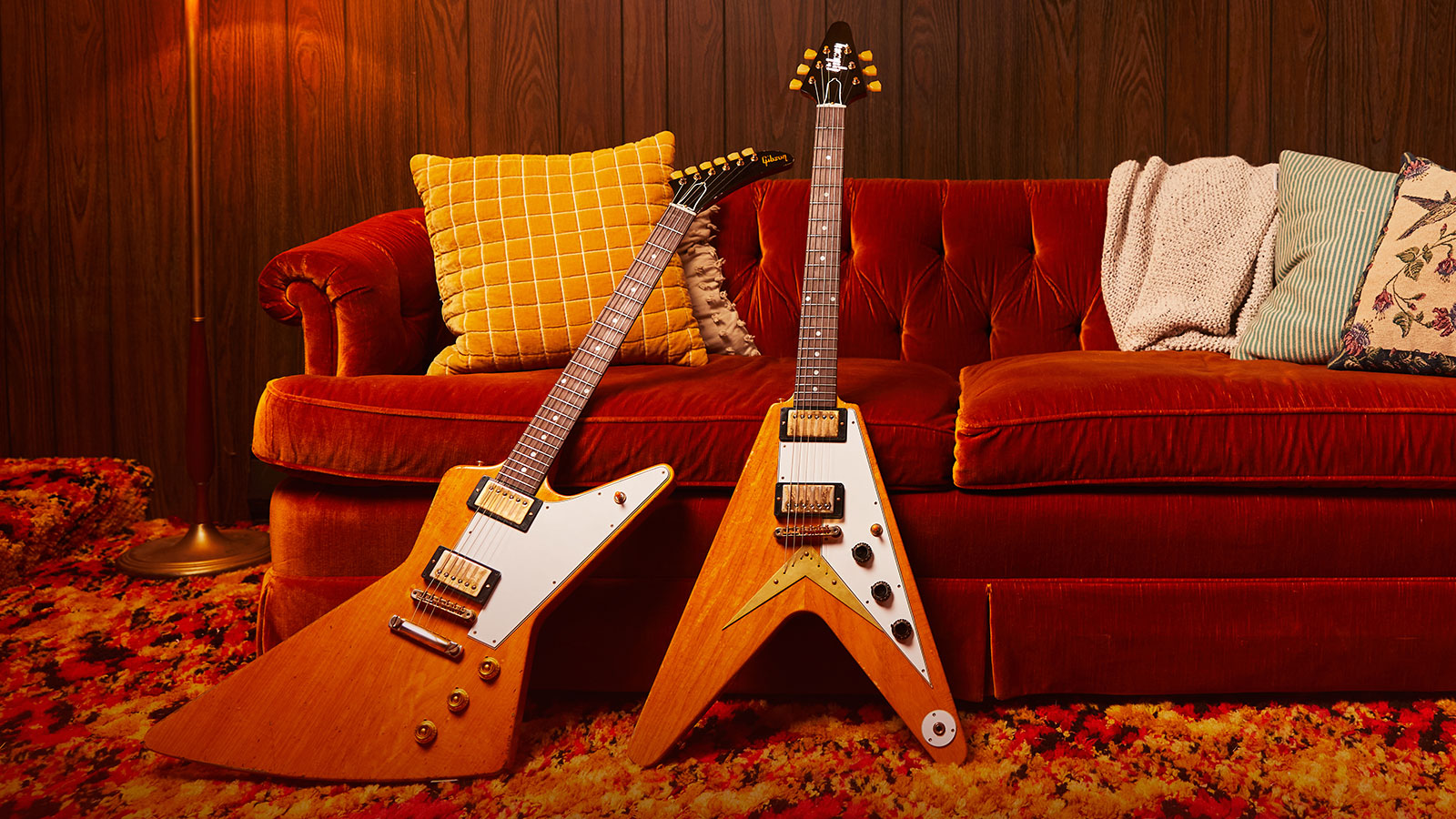
Back in 1958, when the first Gibson Explorer guitars appeared on the market, there was no heavy metal, hard rock, Marshall stacks or overdrive pedals. Distortion was something that amp manufacturers and players generally frowned upon, embraced only by a handful of hooligans and raucous rebels.
Gibson president Ted McCarty conceived the Explorer’s design as a modern, space age-inspired competitor to the Stratocaster, but its radical sharp-angled “arrowhead” (on the earliest version) and “hockey stick” headstock shapes and pointy geometric body that resembled Thor’s lightning bolt were just a little too futuristic for musicians who still considered crew cuts and suit jackets the height of rock ’n’ roll fashion.
Although the Gibson Flying V, which was introduced at the same time, found a small but devoted cult of players during the late ’50s and ’60s, the Explorer didn’t really catch on until the ’70s. This was partially due to the extreme rarity of the original Gibson Explorers; only 22 were built in 1958-59, and fewer than 50 were assembled from leftover parts during the early ’60s.

There were a handful of “early adopters” during the mid ’70s: Eric Clapton, who acquired a second-hand Explorer with a chunk of its lower bass bout sawed off; Rick Derringer, who owned a very early example with a V-shaped headstock; and J. Geils and Allen Collins of Lynyrd Skynyrd.
Soon afterwards, Explorer copies built in Japan, upscale custom models made by companies like Hamer and Dean and reissues offered by Gibson helped fulfill demand as changing musical tastes and fashion caught up with this rediscovered gem.
Truthfully (IMHO), the Explorer does not sound significantly different from most other Gibson-style solidbody models with a 24 ¾-inch scale, set neck, dual humbuckers and stop tailpiece. It can sing like a Les Paul, bark like an SG and spank like a Flying V, with the pickups installed in it arguably playing a bigger overall role than its tone woods or body shape.
The three controls (individual volume for each pickup and master volume) are perhaps slightly more limited than a four-knob configuration, but that’s hardly a handicap. Some players feel that the extended lower bass bout and extra body mass below the bridge enhance its bass response, but that could just be a psychologically influenced observation.
From Metallica to Mastodon and Kiss to Coheed and Cambria, the Gibson Explorer has become an icon of metal guitar, although numerous non-metal players, most notably the Edge of U2, have also used Explorers on occasion.
In addition to several of the previously mentioned players and bands, Gibson has produced Explorer signature models for Sammy Hagar, Matthias Jabs of the Scorpions, Jason Hook of Five Finger Death Punch and others. The current Lizzy Hale signature Explorer model is very successful, and a forthcoming Dave Mustaine model has been in development for a while now.
The Gibson Explorer might not sound dramatically different from many of its dual-humbucker solidbody brethren, but few guitars look as cool or as menacing
The Gibson Explorer might not sound dramatically different from many of its dual-humbucker solidbody brethren, but few guitars look as cool or as menacing. As the Kenny Rogers-look-alike boomer in those old Hair Club for Men ads used to philosophize, “Ninety percent of feeling good is looking good,” and few things feel as good as strapping a Gibson Explorer around your neck and wailing on some power chords.







